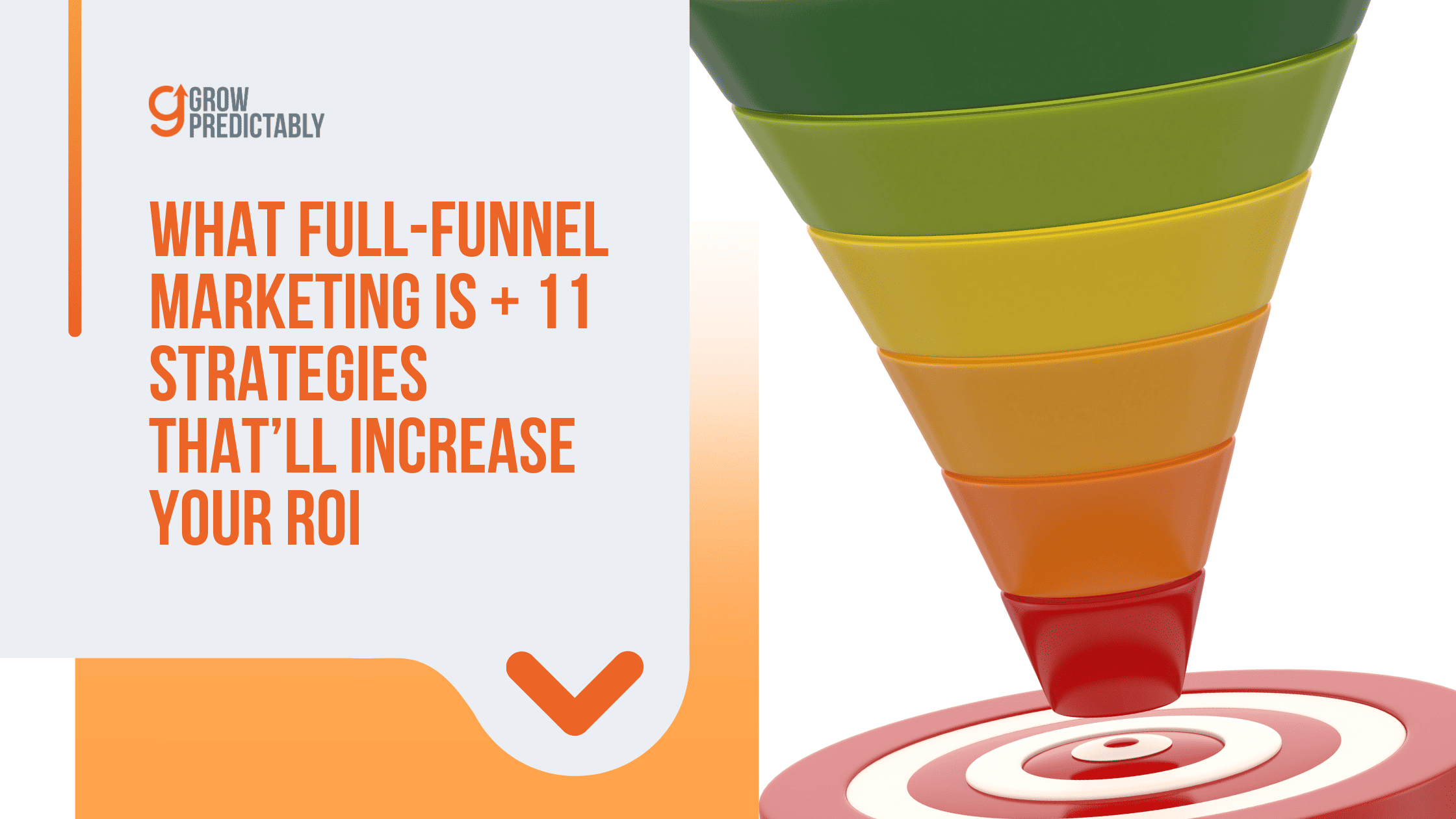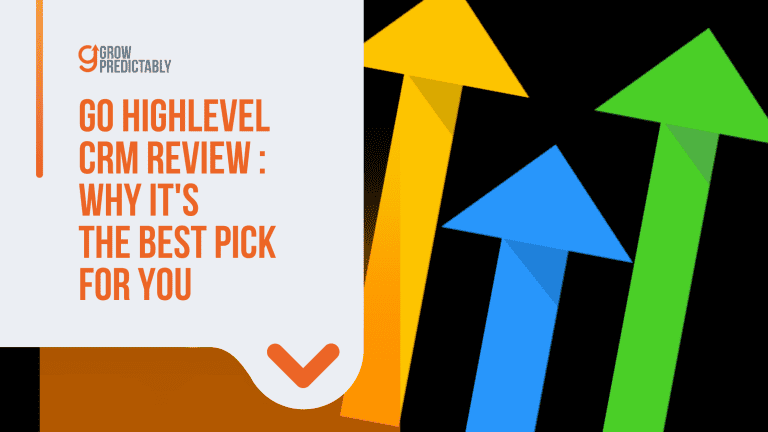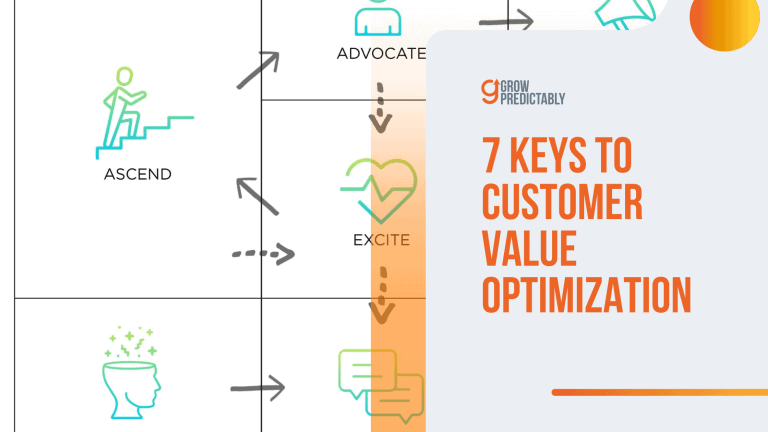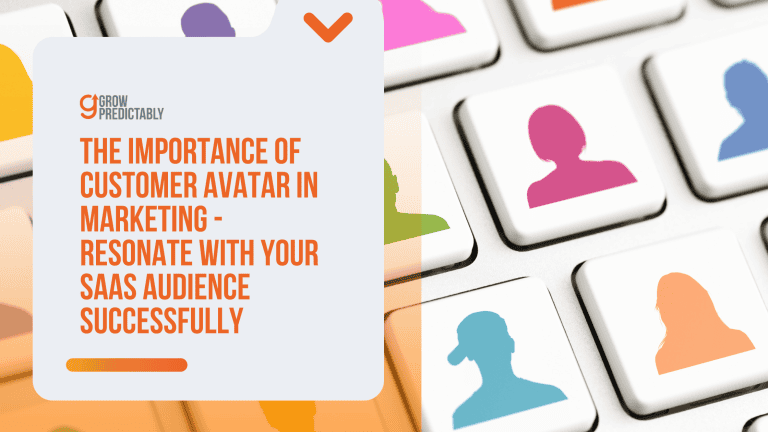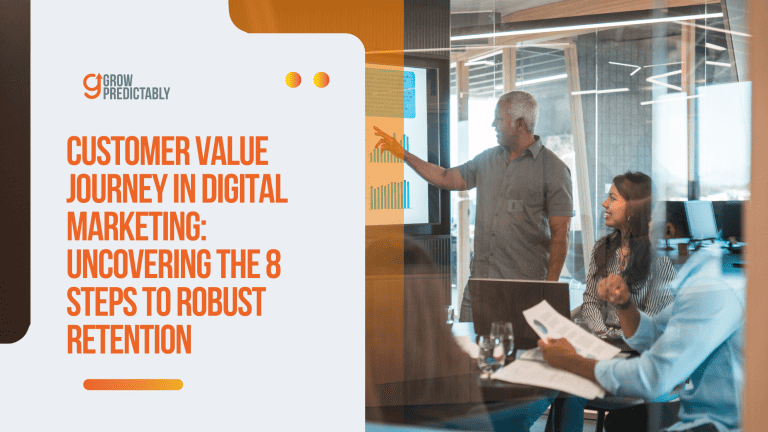What Full-Funnel Marketing Is + 11 Strategies That’ll Increase Your ROI
Do you ever feel like you’re constantly searching for new and inventive ways to connect with your target audience? Imagine if there was a marketing strategy that could not only enhance your results across all channels but also accelerate your buyer’s journey to marketing success. Sounds too good to be true, right?
Enter full-funnel marketing – a powerful approach designed to optimize your ROI by engaging prospects at every stage of the buying process.
Did you know that, according to a Nielsen analysis, campaigns utilizing a full-funnel marketing strategy boast an ROI that’s 45% higher than those focusing solely on bottom-of-the-funnel tactics? It’s no wonder that, on average, full-funnel marketing campaigns outperform their counterparts.
So, what’s the secret behind full-funnel marketing? How does it work, and what exactly does it entail? Let’s dive into some tactics that will set your full-funnel strategy up for success.
But first, allow us to clarify what we mean when we talk about full-funnel marketing.
What is Full-Funnel Marketing?

Stumbling upon the term “full-funnel marketing” might leave you puzzled, particularly as you’re trying to broaden your knowledge on utilizing sales funnels. Don’t worry; the concept can be simplified.
In fact, it’s easier than it appears. Full-funnel marketing is exactly what the name suggests. The focus is on the “full funnel,” meaning the entire funnel performance marketing is targeted.
You’re emphasizing marketing efforts toward potential customers at every stage of the sales funnel, not just one or two stages.
A full-funnel strategy encompasses all of the different stages of the customer journey within the sales funnel, from generating awareness and sparking interest to facilitating conversions and maintaining retention.
By employing a variety of tactics across multiple channels, businesses can develop a comprehensive full-funnel approach that engages customers throughout each stage of the purchasing process.
Contrary to traditional methods, which have been in use since the inception of sales funnels, full-funnel marketing does not isolate any stage of the marketing funnel. In full-funnel marketing, doing so could cause missed opportunities to captivate potential customers, no matter where they are in the marketing stage funnel.
While a full-funnel campaign may be slightly more costly and time-intensive compared to other marketing strategies, the investment is often worthwhile.
Businesses that embrace a full-funnel approach are more likely to achieve improved results in customer acquisition and retention.
The Strategies That Work a Full Funnel Strategy
In a full-funnel marketing approach, the goal is to emphasize every stage of the funnel rather than limiting the focus to just one or two stages. To successfully achieve this, it’s necessary to develop unique marketing strategies for each stage of the marketing funnel.
We’ll explore the most widely used and effective strategic approaches for crafting a well-rounded full-funnel campaign. By segmenting the full-funnel approach into three distinct parts – the top of the funnel, the middle of the funnel, and the bottom of the funnel – we can create a more measurable full-funnel marketing strategy.
- Content Marketing
- SEO
- Paid Advertising
- Product Reviews
- Customer Videos
- Case Studies
- Social Media
- Promo Code or Discounts
- Price/Product Comparisons
- Sales Calls
- Email Marketing
Top of the Funnel – TOFU
As your target audience enters the top of the funnel, your objective is to provide valuable content at no cost in order to establish trust, create a brand, generate awareness, and drive considerable website traffic to initiate their customer journey with your brand.

To kick off your full-funnel strategy, consider implementing some of these common tactics:
1. Content Marketing
Content marketing enables the creation of informative and keyword-optimized content, such as blog posts, eBooks, white papers, and more, to draw in customers during the awareness stage.
By offering valuable resources, businesses can establish trust and credibility, ultimately leading to increased conversions in the future.
2. SEO
Enhancing your website’s content and structure for search engines can improve its visibility in relevant search results, bringing valuable customers to your site and aiding in the attraction of potential prospects.
3. Paid Advertising
Employing paid ads or paid searches is an excellent method for connecting with new audiences and boosting traffic to your website. By integrating them with other full-funnel techniques, your paid search or ads can contribute to advancing customers further down the funnel, resulting in conversions.
Middle of the Funnel – MOFU
Once your target customer progresses from the top of the funnel, they enter the stage where they evaluate their options—the middle of the funnel stage.
During the consideration phase of the customer journey, your aim is to transform inquisitive visitors into potential prospects and convey why your brand is a reliable choice.

To achieve this, consider implementing some of the following tactics:
1. Product Reviews
Product reviews serve as valuable resources for potential customers in the consideration stage as they contemplate purchasing a product. These reviews offer insights into the experiences of others, including their opinions on the product, its effectiveness, and any encountered issues.
By providing such information, customers can make well-informed decisions regarding their potential purchase.
2. Customer Videos
Offering video content featuring previous customers utilizing your product or service allows prospects to envision the benefits they could gain from your offerings. This form of content also fosters trust and credibility, as it demonstrates real-life individuals having positive experiences with your business.
Consequently, customer videos can serve as a compelling instrument in encouraging potential customers to explore your products or services further.
3. Case Studies
Have you ever wondered how your product or service has impacted others? Case studies offer a deep dive into the experiences of your customers, shedding light on the advantages of partnering with you.
By presenting tangible instances of your offering resolving issues or enhancing circumstances, case studies enable prospective clients to envision the ways in which you could assist them too.
Doesn’t that sound like a powerful way to demonstrate your value?
4. Social Media
Have you considered the impact of captivating content on social media platforms like Facebook, Twitter, and LinkedIn? It can significantly elevate your brand’s recognition and reel in new prospects.
By cultivating connections with potential customers on social media, you pave the way for conversions in the future.
Why not seize the opportunity to strengthen your brand through these powerful channels?
Bottom of the Funnel – BOFU
This stage is the primary focus of traditional marketing funnels and with good reason. BOFU, or Bottom of the Funnel, is where the majority of potential customers make their decisions, resulting in most conversions taking place at this point. Your aim is to enhance your prospects’ trust in your product or service.

To encourage prospects to select you and your offering, consider employing these tactics:
1. Promo Codes or Discounts
Offering promo codes or discounts can be a powerful tool in transforming prospects into purchasing customers. These incentives encourage individuals to invest in your product or service, boosting sales in the process.
Moreover, promo codes and discounts can foster customer loyalty, paving the way for repeat business and long-term relationships.
2. Price/Product Comparisons
By offering clear and to-the-point comparisons between your product and your competitor’s, you can aid in transforming prospects into purchasing customers. Moreover, price comparisons contribute to reinforcing customer confidence in their decision to buy.
By showcasing the value of your product compared to others in the market, you help assure buyers that they are obtaining a favorable deal.
3. Sales Calls
Sales calls hold a vital position in the sales journey, playing a key role in converting prospects into purchasing customers. By engaging in sales calls, you can establish connections with potential customers and foster relationships, resulting in increased sales opportunities.
These calls also offer the opportunity to gain insight into your potential customer’s needs and desires. In the end, sales calls contribute to closing more deals and enhancing your overall revenue.
4. Email Marketing
Email marketing serves as a versatile tool at every stage, from capturing new leads to converting customers and maintaining their loyalty as lifelong enthusiasts.
By delivering focused and pertinent marketing messages through email campaigns, businesses can cultivate leads and sustain customer engagement, leading to an increased number of conversions in the long run.
- Treat each stage of the marketing funnel as a piece that supports and sets up the next stage—not as a stand-alone phase.
- Create engaging content that attracts attention and inspires action.
- Use dynamic remarketing to target people who have visited your website or clicked on your ads.
- Segment your email list and send tailored messages to different groups of subscribers.
- Target potential customers with social media ads based on their interests and demographics.
- Experiment with new channels and tactics to find what works best for your business.
- Make sure to measure engagement metrics for each stage of the funnel and adjust marketing strategies when necessary.
The Benefits of Full-Funnel Marketing
A variety of benefits can be reaped by businesses that implement full-funnel marketing techniques. The most typical advantages arising from the incorporation of holistic full-funnel marketing strategies and methodology in your marketing initiatives are outlined below.
1. Improved customer acquisition
By engaging with customers throughout each phase of the purchasing journey, businesses can enhance the probability of attracting new clientele.
2. Increased customer retention
Clients who enjoy a pleasant encounter with your brand remain loyal for an extended period. Employing this marketing strategy enables you to forge enduring connections with your customers, resulting in better retention rates.
3. Greater brand awareness
A proficiently carried out full-funnel marketing endeavor can work miracles for your brand building and business recognition.
As an increasing number of individuals become acquainted with your brand, the prospects of acquiring new leads and patrons are amplified.
4. Higher conversion rates
By employing tactics aimed at guiding customers through the funnel, businesses can witness enhanced conversion rates. This marketing approach assists in securing more transactions and augmenting your overall revenue.
5. Improved ROI
Since full-funnel marketing encompasses every phase of the entire customer journey, it can serve as a more streamlined and economical method for promoting your business.
When executed correctly, this marketing strategy can yield a superior return on investment compared to alternative marketing techniques.
FAQs
Have you ever heard of full-funnel marketing? If this is your first time, you probably have a lot of other questions about the subject.
In this section, we’ll answer some of the most frequently asked questions about full-funnel marketing.
In Summary
A full-funnel marketing strategy employs a range of techniques to connect with potential customers at every phase of the purchasing journey. These tactics involve every marketing channel, producing high-quality content, reaching the ideal audience, implementing efficient advertising, and capitalizing on authoritative voices.
Evaluating the success of these campaigns is vital for refining them to achieve superior outcomes. Some frequent missteps businesses make when applying a full-funnel marketing strategy are overemphasizing a single stage of the funnel, neglecting to utilize diverse marketing methods, and failing to measure the results of their marketing efforts well.
To optimize your full-funnel digital marketing initiatives, ensure they correspond with your business objectives, accurately target and resonate with your audience, exhibit a well-crafted and captivating design, and are consistently monitored and assessed for potential enhancements in performance.

